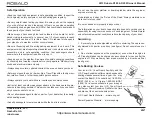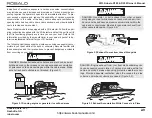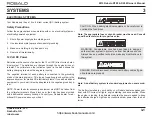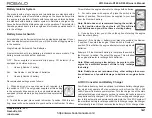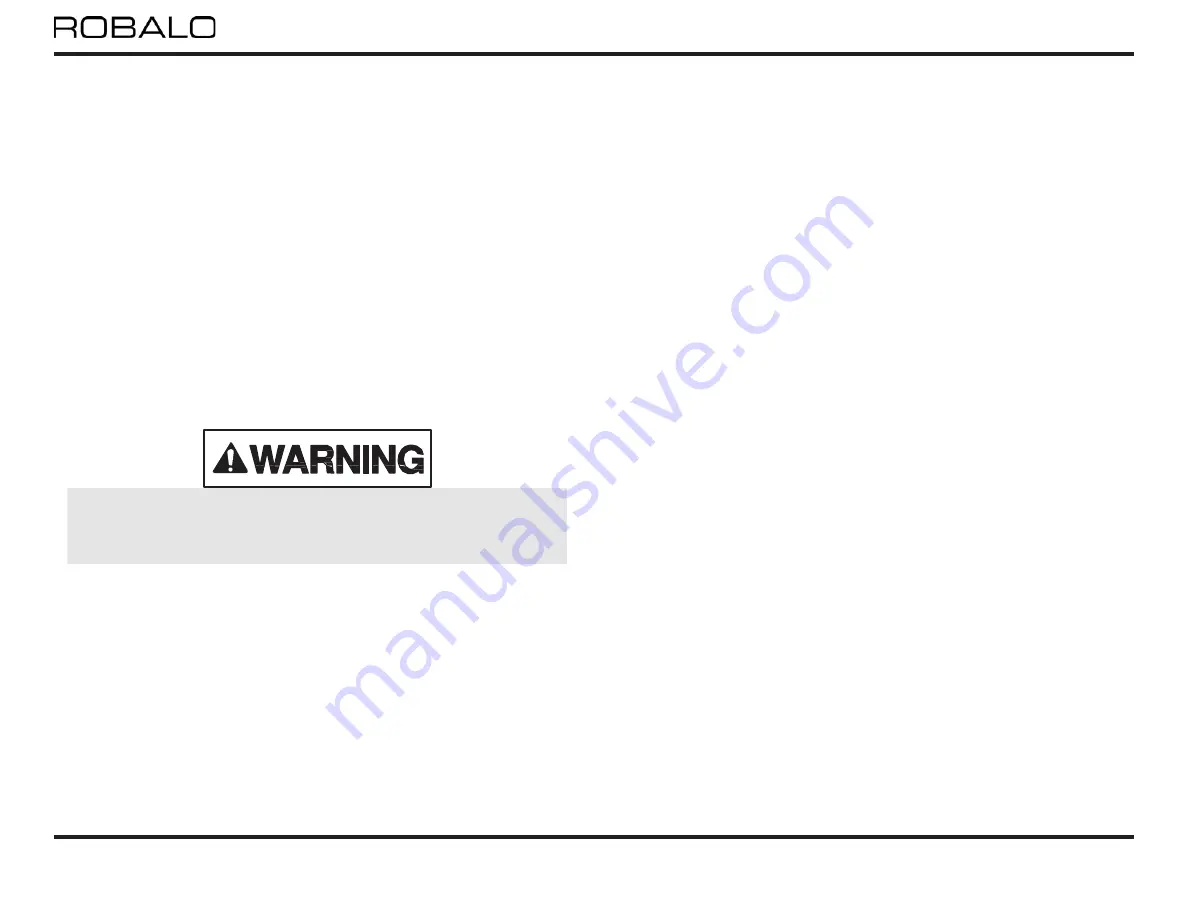
2013 Robalo R180 & R200 Owner’s Manual
Robalo Boats, LLC
Nashville, GA
robalo.com
2-7
•Have all persons on board put on their personal
fl
oatation devices.
•If you can get at the
fi
re, aim the
fi
re extinguisher at the base of the
fl
ames and use a sweeping action to put out the
fi
re.
•If the
fi
re gets out of control, make a distress signal, and call for help on
the radio.
Deciding whether to stay with the boat or abandon ship will be dif
fi
cult. If
the decision is to abandon ship, all persons on board should jump over-
board and swim a safe distance away from the burning boat.
Guidelines for Fire Prevention
•Check the bilge for fuel leaks
•Check cleaning products for
fl
ammability
•Ventilate when cleaning or painting
•Disconnect electrical system from power source when performing any
type of maintenance
WARNING: Smoking, poor maintenance, or carelessness when
refueling can cause hazardous conditions. Always follow proper
refueling procedures for your boat.
•Use extra caution when using exposed
fl
ame around urethane foam
•Extinguish smoking materials carefully
•Ensure ventilation systems are not obstructed
•Use only approved marine cooking and heating systems
•Open
fl
ames demand constant attention
•Keep
fl
ammable materials in approved containers
•Replace circuit breaker fuse with one of the same amperage
•Electrical appliances must be within rated amperage of boat circuits
•A quali
fi
ed marine electrician should service the electrical system
Flooding, Swamping or Capsized Boat
Flooding or swamping is usually caused by the actions of an inattentive
boat operator, or by hazardous weather or water conditions. To prevent
boat
fl
ooding:
•Install drain plug before launching.
•Ensure proper bilge pump operation.
•Do not overload boat.
•Adjust boat speed and trim to match sea and weather conditions.
•Close all cabin hatches, doors, etc. while underway to prevent
fl
ood-
ing due to heavy seas or rain. Ensure proper ventilation to avoid carbon
monoxide poisoning. See carbon monoxide hazard information later in
this chapter.
•When only using one anchor, it should be attached to the bow of the
boat.
•When slowing down or moving in reverse do not allow wake or following
seas to
fl
ood cockpit.
If your boat becomes swamped or capsizes, put on a PFD immediately
and set off a distress signal. Chances are good that a capsized boat will
stay a
fl
oat. For this reason, stay with the boat. Do not leave the boat or
try to swim to shore except under extreme conditions. A capsized boat is
easier to see than a swimmer, and the shore may be farther away than
it appears.
More often than not, boats sink while docked. Any number of factors may
contribute to these sinkings. There may have been a mechanical failure
such as a failed bilge pump or an electrical problem such as a dead bat-
tery or tripped circuit breaker. Check your boat regularly if it is docked for
an extended period of time to make sure everything is in order.
Hypothermia
If a person falls overboard, hypothermia may be an immediate concern.
Hypothermia means a person’s body loses heat to the water faster than
the body can replace it. If not rescued, the person will become exhausted
or likely drown. In general, the colder the water, the shorter the time for
survival. PFDs will increase survival time because they provide insula-
tion.
https://www.boat-manuals.com/










